Latent Grounds — Can Tunis
In Latent Grounds we explored and intertwined the multiple narratives of Can Tunis neighborhood. Forgotten and marginalized areas are not static, they carry histories, host new forms of life and social interaction, and challenge the ways we perceive the city.
Throughout four acts, we crossed the Can Tunis area to reach the Municipal Material Storage. During this journey, a speculative exploration unfolds through the memory and materiality of the place.
This project is part of the WCA26 proposal, which aims to collectively rehearse new forms of care and coexistence on a wounded planet in transition. It’s the first step in two-years journey designed by MEATS students.
ACT I — SIGHTLINE
At Bar Litoral, the roll was used upside down as a tablecloth on which we served some welcome tapas and invited participants to draw and express their impressions of the place, sparking a dialogue about Can Tunis and its history.
The neighborhood of Can Tunis is a hidden zone between the port and the Montjuïc Cemetery. It has been one of Barcelona’s largest informal settlements by the mid 20th century. Now, it survives only thanks to the truck drivers working at the nearby port and a few families still living in the last remaining housing block.
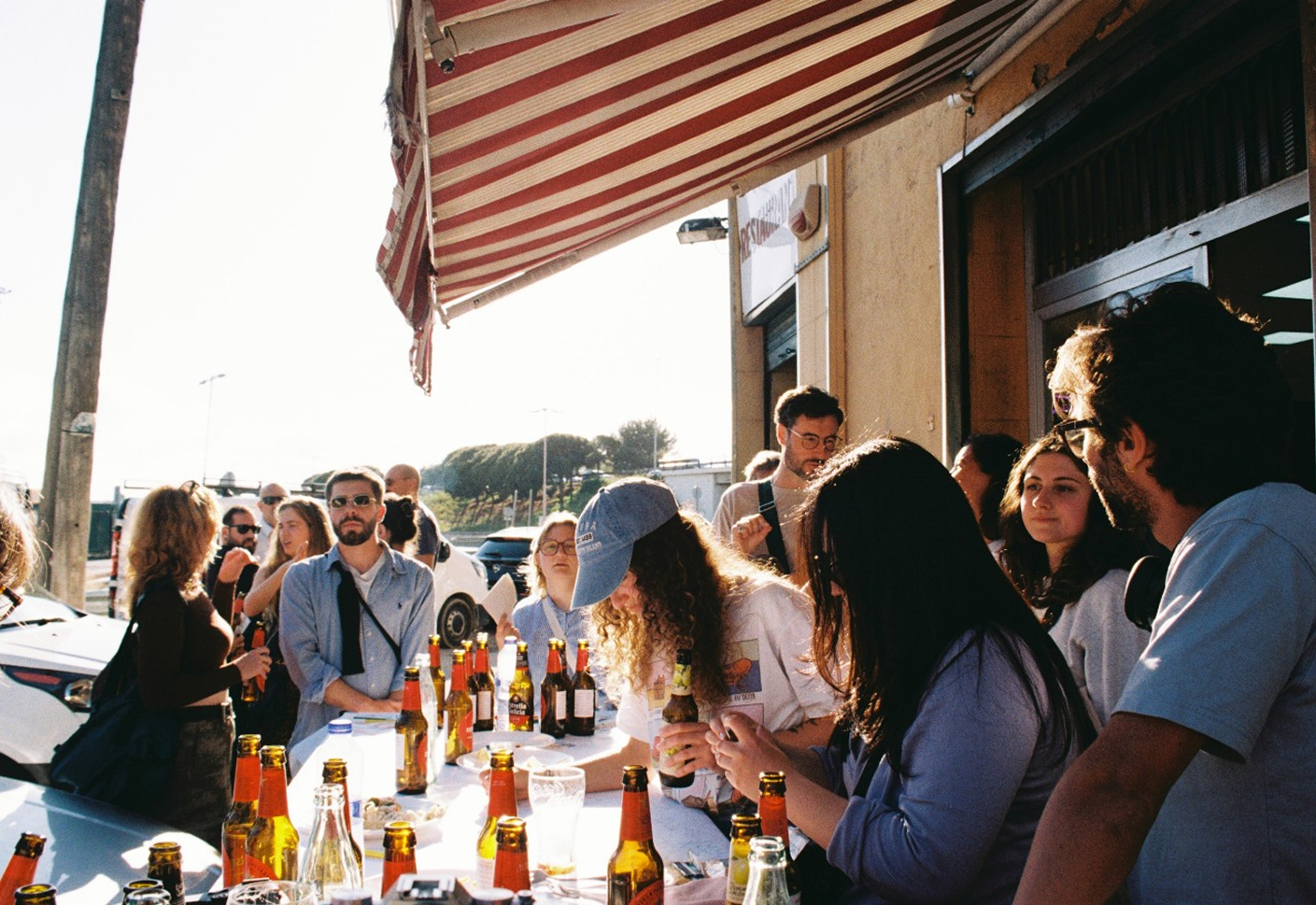
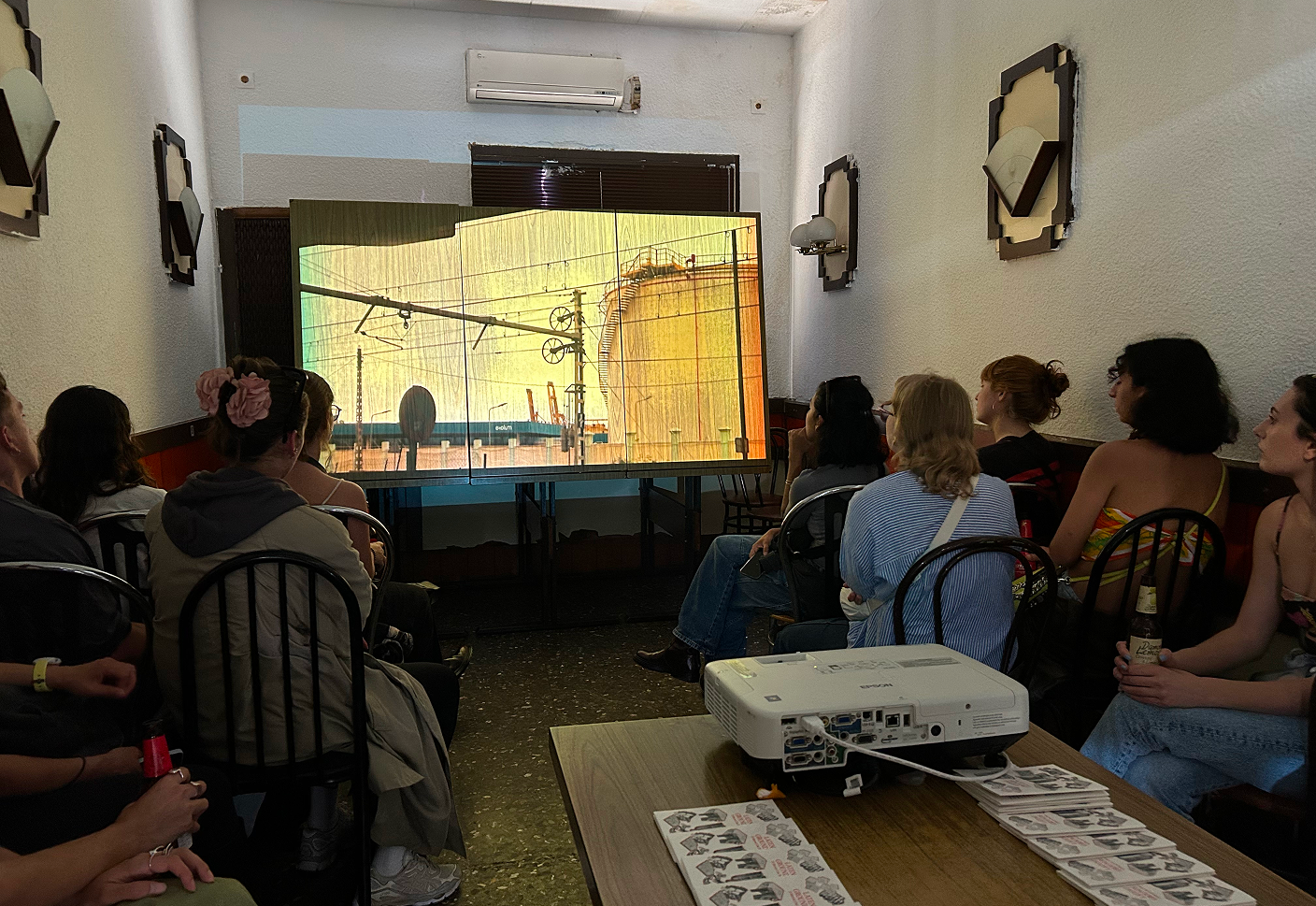
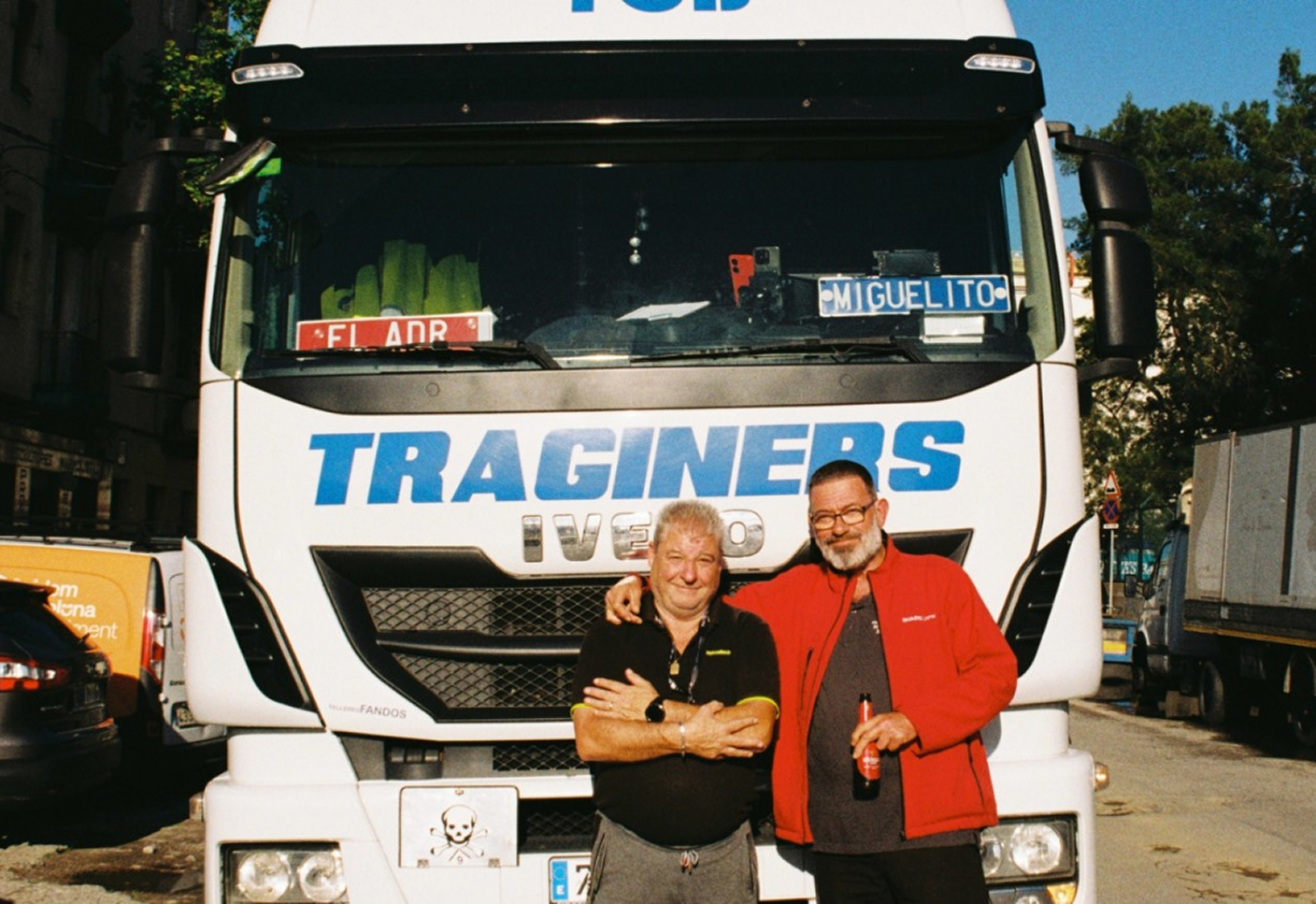
ACT II – INCURSION
We reinterpreted the territory through walking in a collective procession from Bar Litoral to the Municipal Material Storage. Each participant received a map of the route to note down and draw personal reflections.
The whole group was led by one person who has carried the rolled-up paper to the municipal depot.
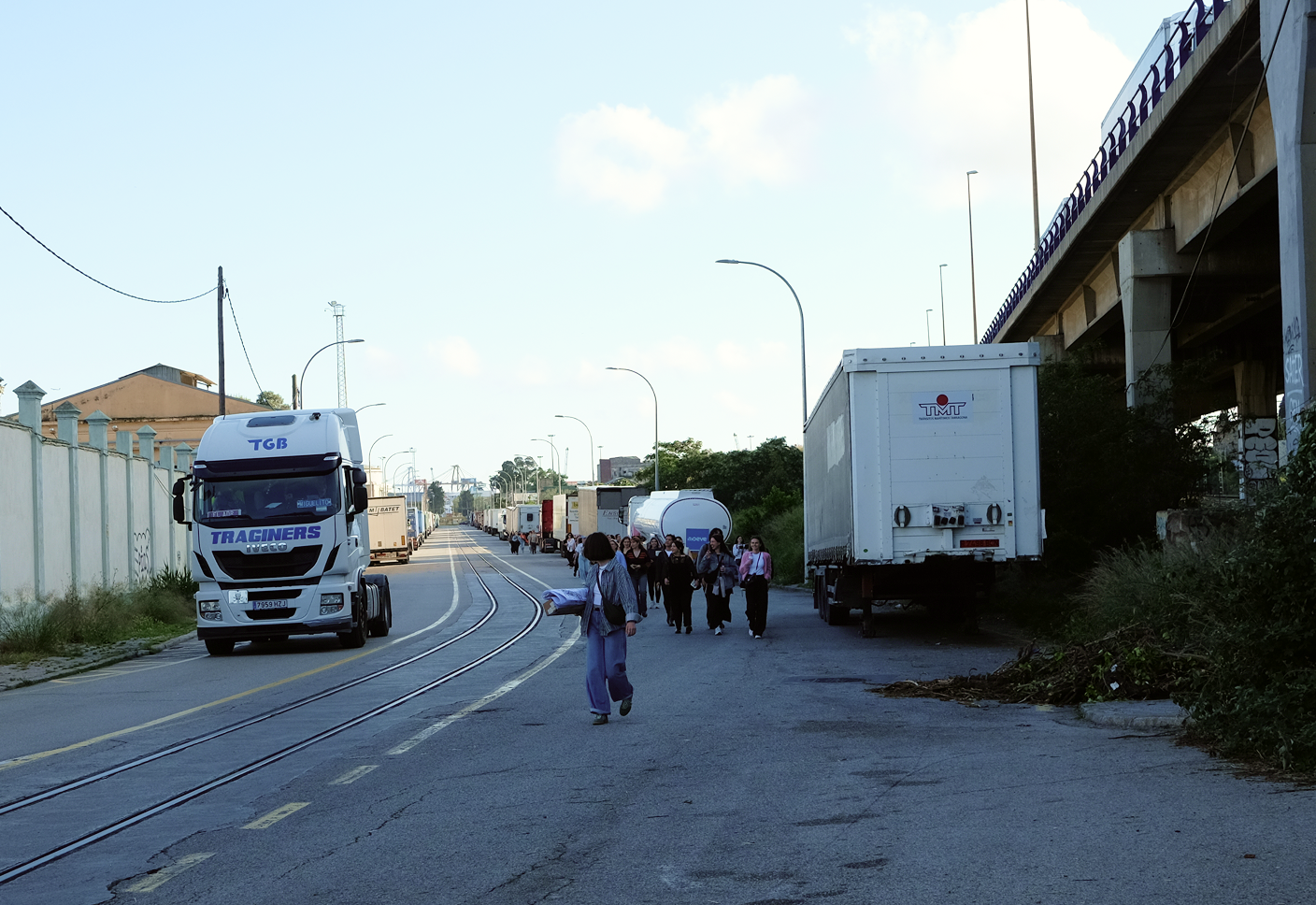
Act III – THRESHOLD
Placing the 14-meter roll along the threshold was a way to once again emphasize the multiple layers of meaning and possibility contained there. It also served as a literal and symbolic means of accessing the site; positioned at the entrance, the scroll demanded to be looked at and stepped on in order to reach the actual location.
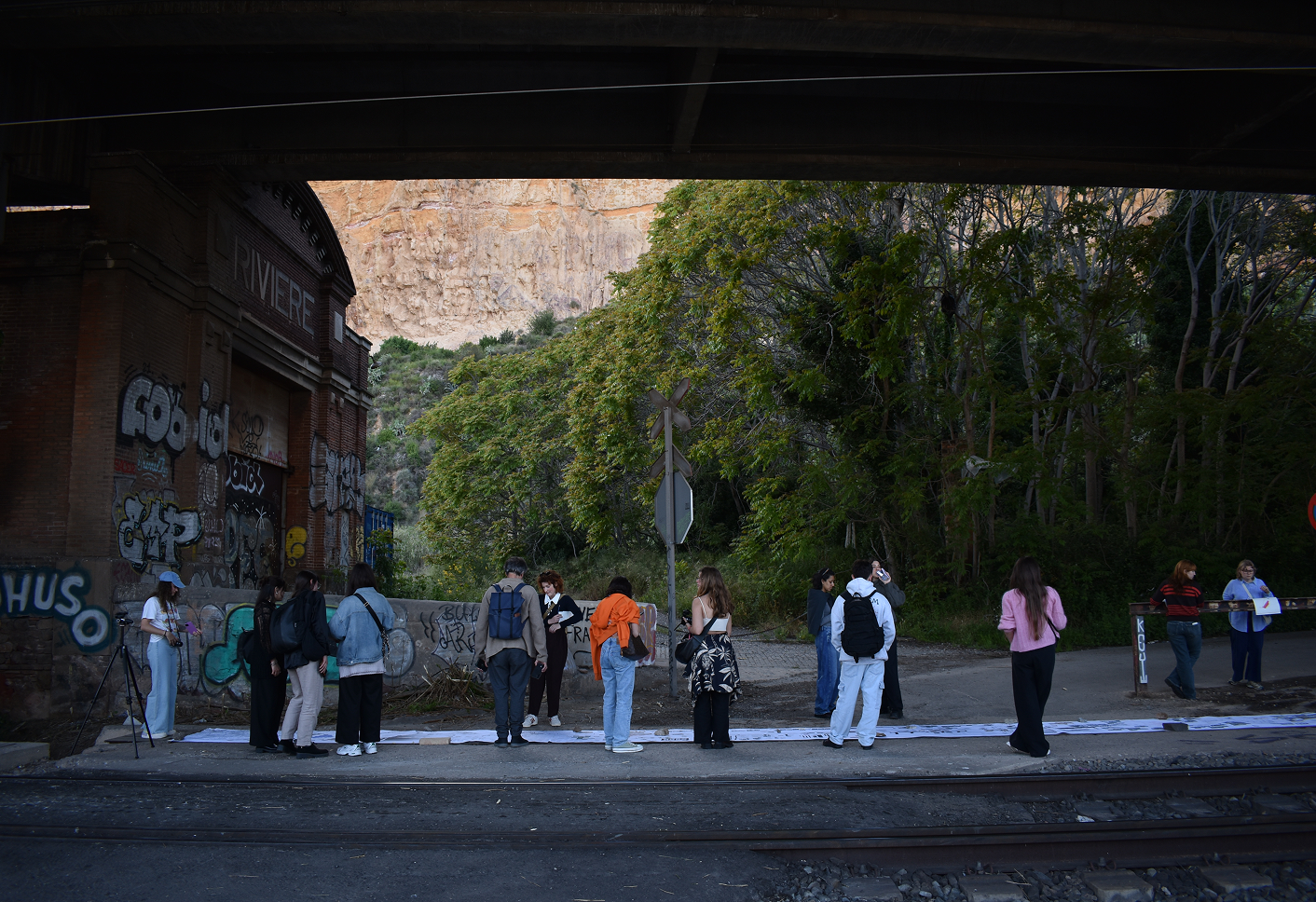
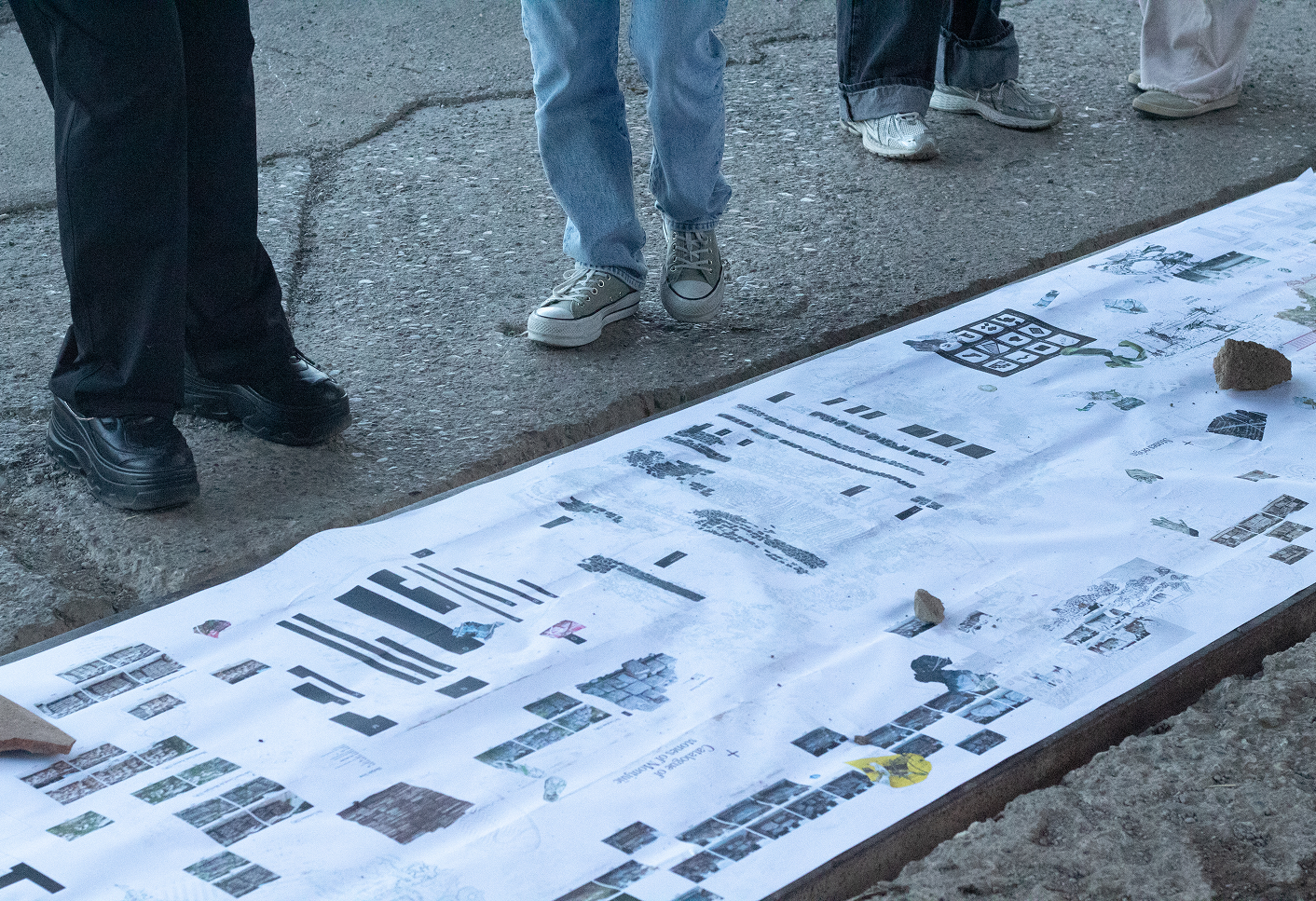
ACT IV – ON-SITE
Abandoned yet full of latent potential, this site holds stone waiting to be reused.
Environmental complaints about disturbing the endangered peregrine falcons have led to restrictions, forcing manual transport. Now in legal limbo and under municipal concession, the site carries strategic value for the city’s future.
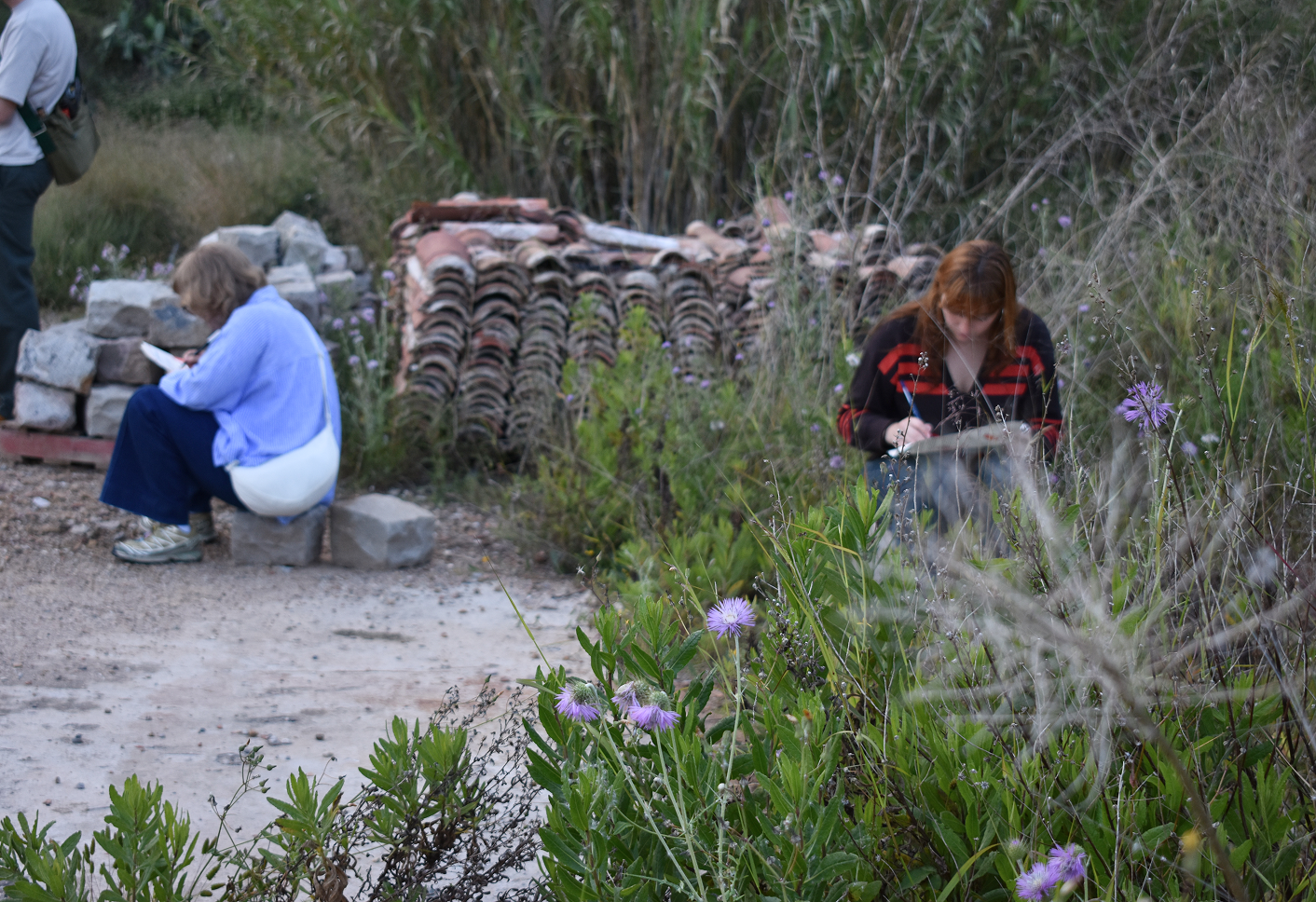
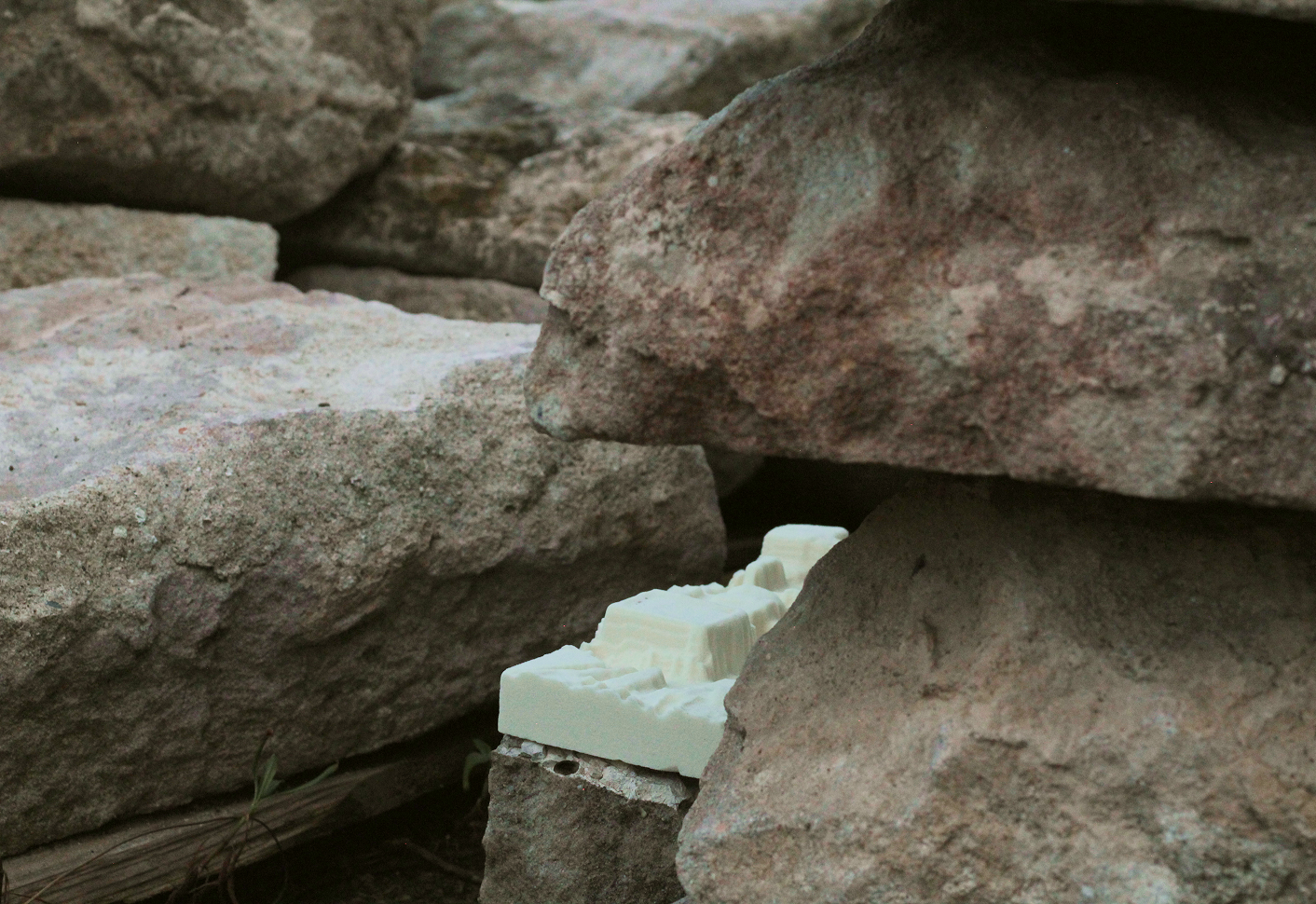
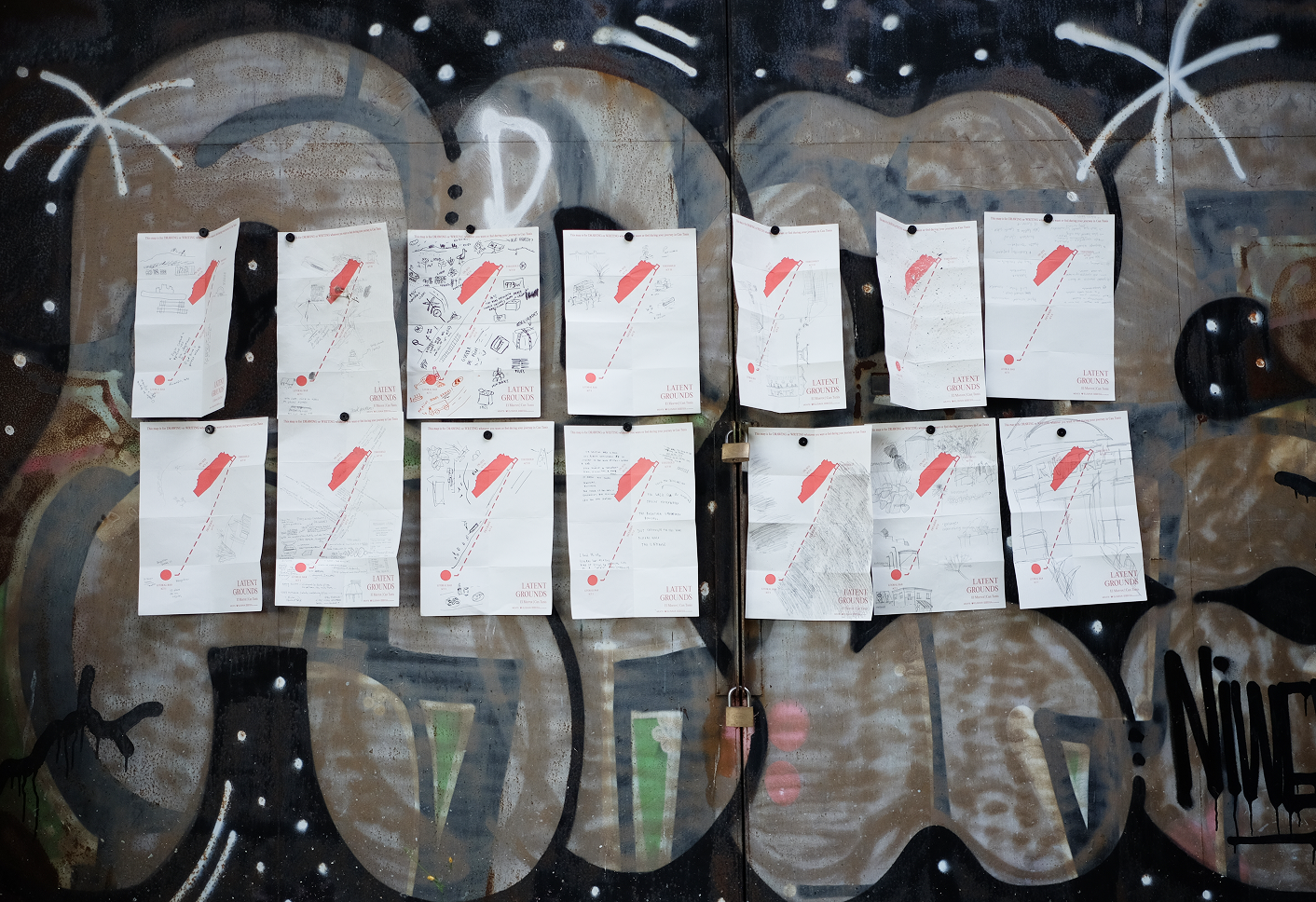
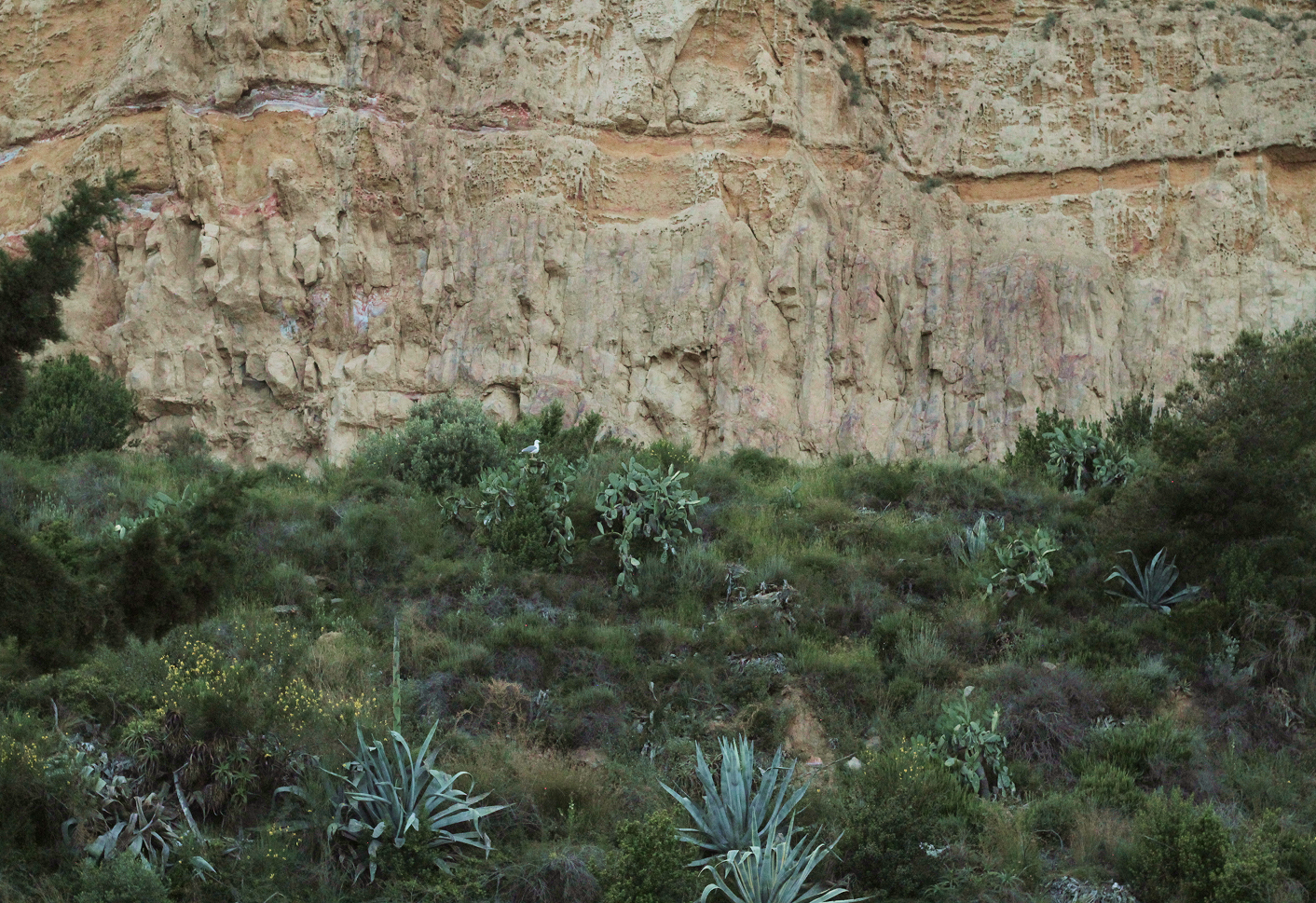
More than just documentation, the 14-meter-long paper roll functioned as an interpretive artwork that captured the complexity and memory of Can Tunis.
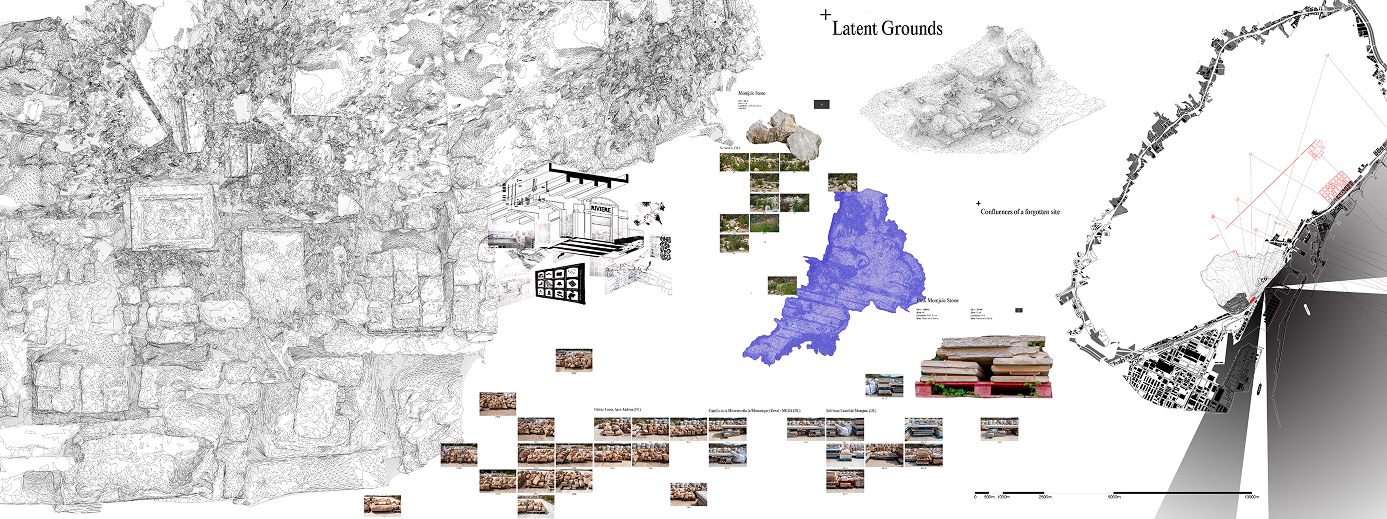
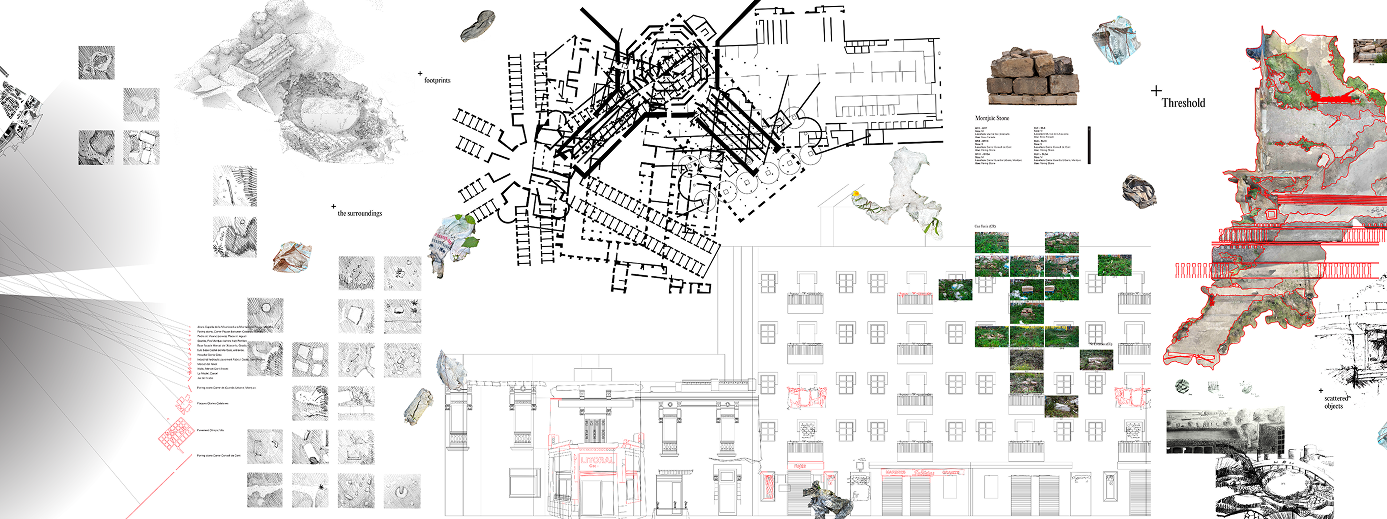
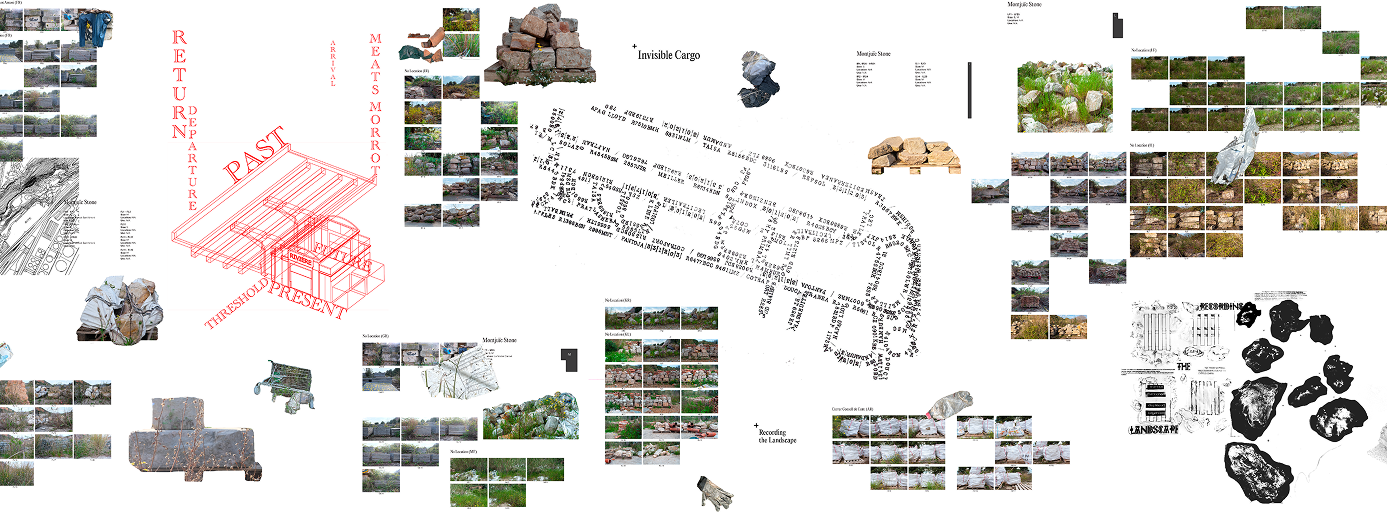
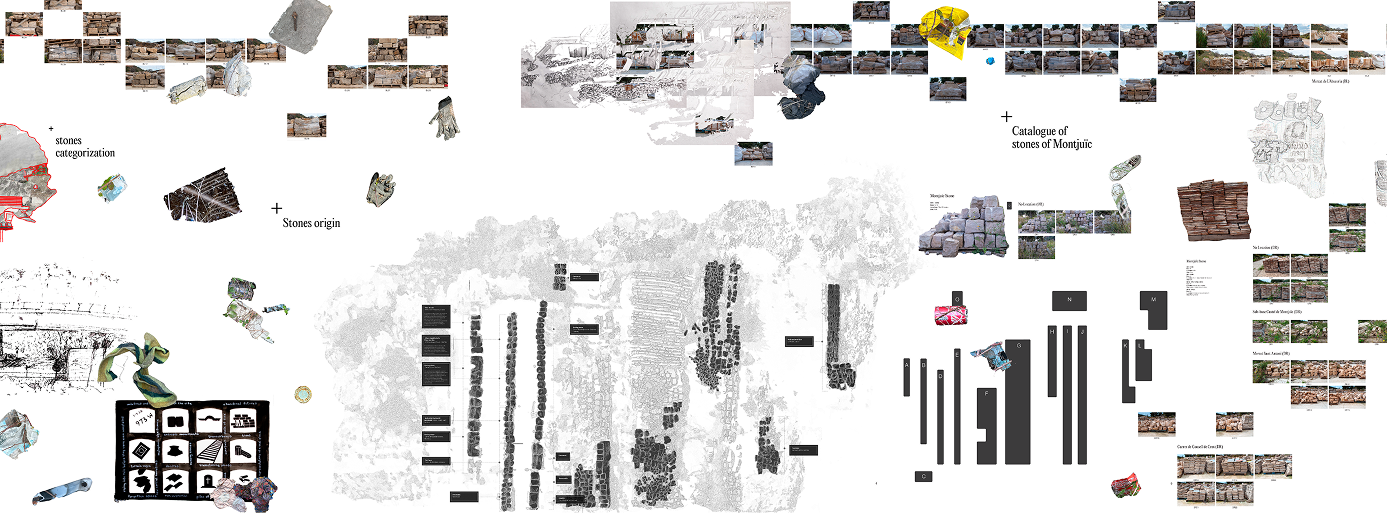
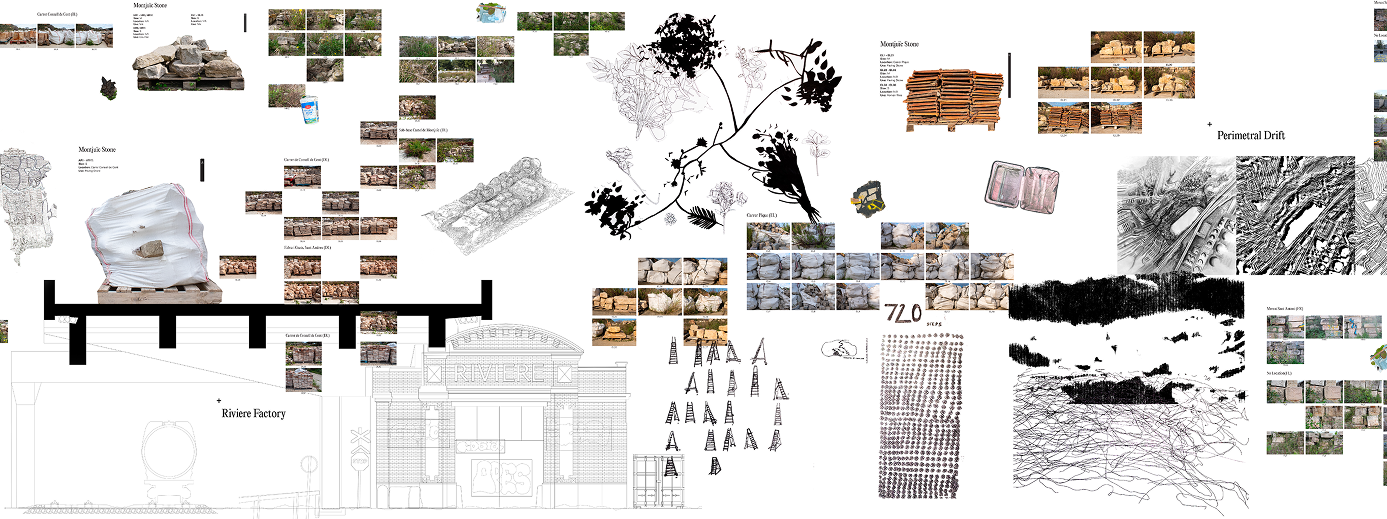
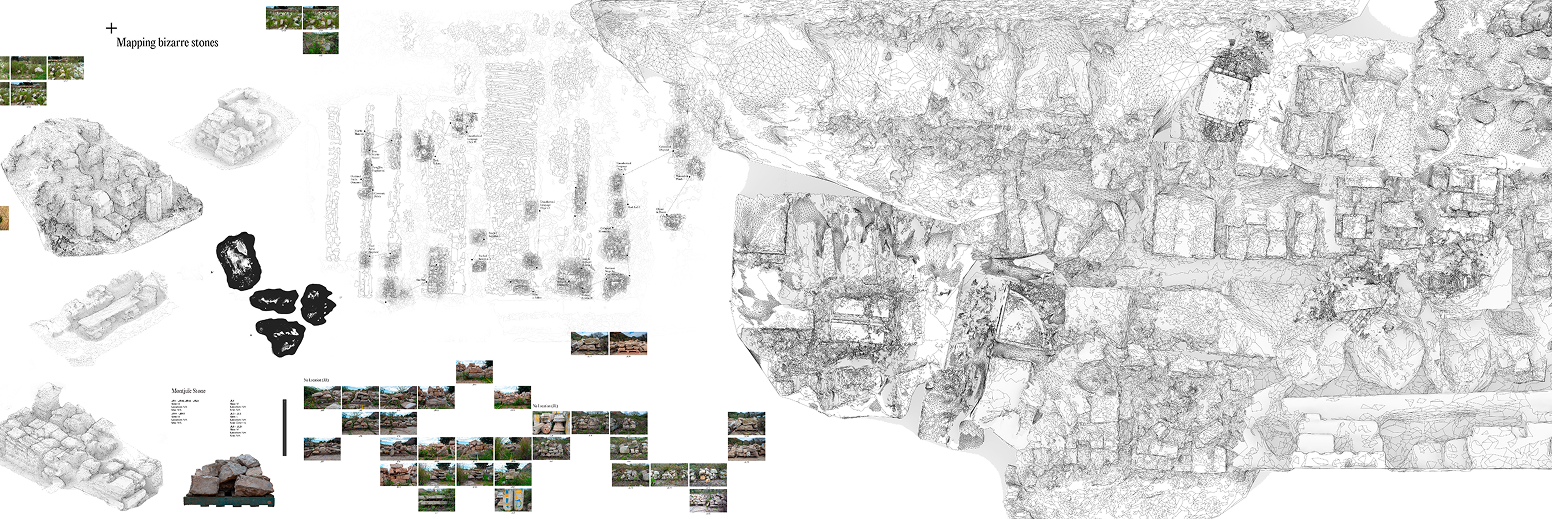
2024 — ELISAVA, Barcelona
I’ve designed and carried the roll <3
Master's Ephemeral Architecture and Temporary Spaces
PROFESSORS
Roger Paez, Stella Rahola Matutes
© 2025
I’ve designed and carried the roll <3
Master's Ephemeral Architecture and Temporary Spaces
PROFESSORS
Roger Paez, Stella Rahola Matutes
© 2025